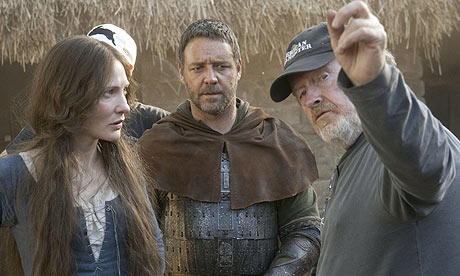
Hollywood production in the UK is booming, but you wouldn't know it from the results published yesterday by Pinewood Shepperton, owner of the country's two largest film studios.
With recent or upcoming shoots including Clash of the Titans, Robin Hood, Prince of Persia, Harry Potter and the Deathly Hallows, John Carter of Mars and Pirates of the Caribbean 4, the UK has become home to the $200m Hollywood blockbuster.
Inward investment – largely the measure of how much US producers spend in the UK – more than doubled in 2009 to a record high of £752m. Yet somehow the combined film revenues of Pinewood and Shepperton Studios, historically the base for big US productions, managed to fall 6% to £22.7m, resulting in a 24% reduction in pretax profits.
Pinewood bosses blamed this lacklustre result on the hangover from the Hollywood actors' strike. But their real problem is that the US majors are finding cheaper alternatives. Instead of paying a premium to rent soundstages and full-service offices at Pinewood or Shepperton, they are improvising their own cut-price production facilities out of disused industrial and military sites.
Pinewood recently became so concerned about this trend that it lobbied the government to disqualify these new sites from the culture test, which dictates whether a film is eligible for the UK tax credit. The test awards points for using British facilities; Pinewood claimed any work carried out at such temporary studios shouldn't count. The government rejected this argument.
In public at least, Pinewood CEO Ivan Dunleavy is sanguine about the situation. "There's always competition from opportunist property owners renting out space, but what's encouraging is that a lot of work is coming to the UK, and we're getting our fair share," he says.
The tax credit is worth 16% of the budget for a blockbuster shot in the UK, including the salaries of American stars. It means the taxpayer is subsidising a film like Robin Hood to the tune of around £25m.
Warner built the set for Clash of the Titans at Longcross Studios, a former tank testing site in Surrey. The biggest shed at Longcross is comparable in size with Pinewood's flagship 007 stage, but costs 80% less to hire, though the producer has to bring all the fixtures, fittings and even the electricity.
Disney has now taken over Longcross to construct the enormous steel sets for its sci-fi adventure John Carter of Mars, which it hopes will become a franchise. It is also using a vast former Woolworths warehouse in Greenford.
Christopher Nolan has long based himself at the Cardington airship hangars in Buckinghamshire, where he built Gotham City for Batman Begins and The Dark Knight. Last year he shot his latest film, Inception, there.
Warner has always shot the Harry Potter franchise at an old Rolls-Royce factory in Leavesden. The studio recently announced that once the final Potter film is complete, it will buy Leavesden and convert it into a permanent production facility, alongside an exhibition of Potter props, sets and other memorabilia.
Ridley Scott did use Shepperton, which he once owned, for Robin Hood, but shot the bulk of the film on location in Wales.

